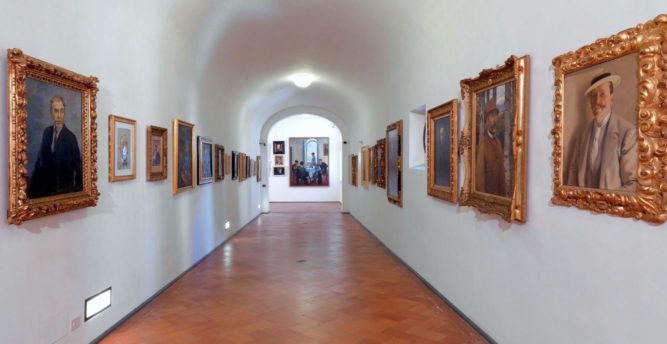The Vasari Corridor’s Revolutionary New Future
 The Vasari Corridor, which has been closed since 2016, has just had renovation plans approved and will reopen in 2021.
The Vasari Corridor, which has been closed since 2016, has just had renovation plans approved and will reopen in 2021.
The Vasari Corridor has been traditionally home to one of the largest collections of self-portraits by famous artists from the Renaissance to the 20th century. Built in 1565 by Giorgio Vasari for Grand Duke Cosimo de’ Medici, it was designed to link Palazzo Vecchio to the Pitti Palace. It begins in the Uffizi and runs above Ponte Vecchio and down to Santa Felicità and the Pitti complex. Many issues, however, led to its closure such as limited accessibility for the public but especially for the disabled and lack of security exits. The new plans which will rectify these concerns require a year and a half of work and will cost 10 million euro.
Besides renovations on the areas needing improvement, other enhancements will also be added. The artworks will be moved to the second floor of the Uffizi Gallery to allow the corridor to be more open to the public in comparison to in the past when access was granted only to small groups led by tour operators or booked through travel agencies. This sets aside the worry of painting conservation. Ramps and rest rooms for those with disabilities will also be added and heating, an air conditioning unit and a LED lighting system will be installed as well.
Among the exhibits that will move to a new location are self portraits by Filippo Lippi, Andrea del Sarto, Giorgio Vasari, Pieter Paul Rubens, Gian Lorenzo Bernini, Velazquez, Rembrandt, Antonie Van Dyck, Rosalba Carriera, Jean-Etienne Liotard, Antonio Canova, Ingres, Elisabeth Vigée-LeBrun, Giovanni Fattori and Marc Chagall among others.
In addition to the 73 small windows that illuminate the hall, in the middle of the passageway are three large windows that open westward. Italy’s Fascist ruler Benito Mussolini had them built for Hitler’s visit to Florence, to look out on the Arno River, the bridges and the Florence cityscape below with the idea of fostering a sense of conquest, and power, for both dictators.
Thirty ancient sculptures will be displayed in the corridor for visitors to view along with a space dedicated to 16th century frescoes. An exhibition featuring pictures of the destruction caused by the Uffizi bomb blast will be introduced as a way to show the trauma the area right below the corridor experienced. Pictures that capture the damage from the Nazis blowing up the nearby bridges during WWII will also be displayed.
While the Vasari Corridor has always served as its own attraction, it will officially become a part of the Uffizi after reopening. Visitors can enter the Uffizi, stroll through the Vasari Corridor and then explore the Boboli Gardens or the Pitti Palace. Tickets will cost €45 in high season, €20 in low season and will be free for students. Uffizi director Eike Schmidt says he is looking into creating a special unified ticket that will include Palazzo Vecchio, Uffizi, Pitti Palace, the Boboli Gardens, Vasari Corridor and Forte Belvedere. (kelsey lentz)
